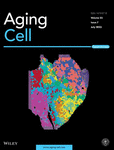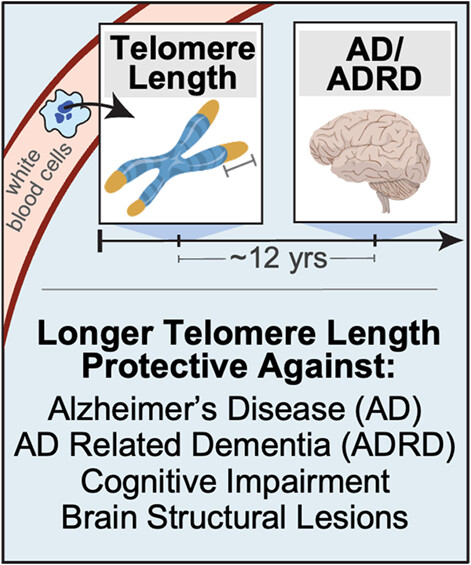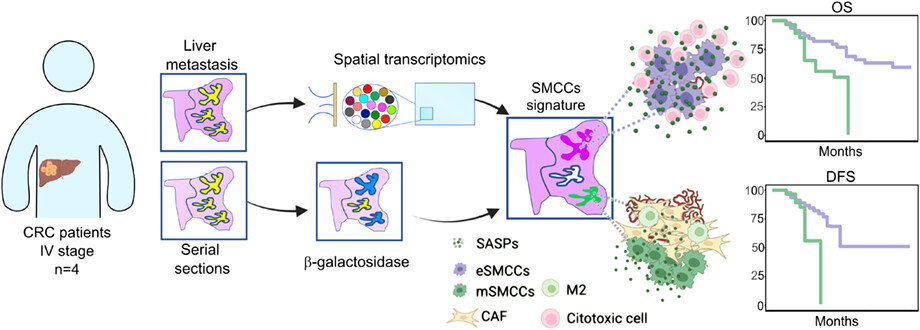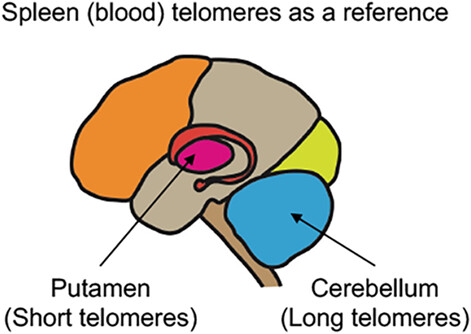Journal list menu
Export Citations
Download PDFs
FEATURED COVER
Featured Cover
- First Published: 17 July 2023
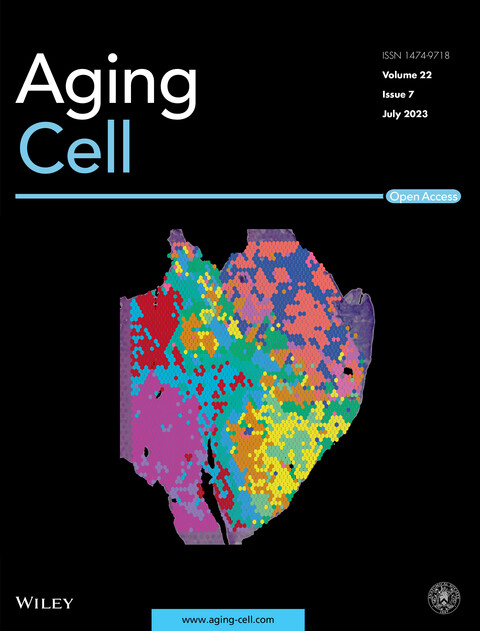
Cover legend: The cover image is based on the Research Article Spatial resolution of cellular senescence dynamics in human colorectal liver metastasis by Ombretta Garbarino et al., https://doi.org/10.1111/acel.13853
ISSUE INFORMATION
REVIEW ARTICLE
Association between genetically determined telomere length and health-related outcomes: A systematic review and meta-analysis of Mendelian randomization studies
- First Published: 26 May 2023
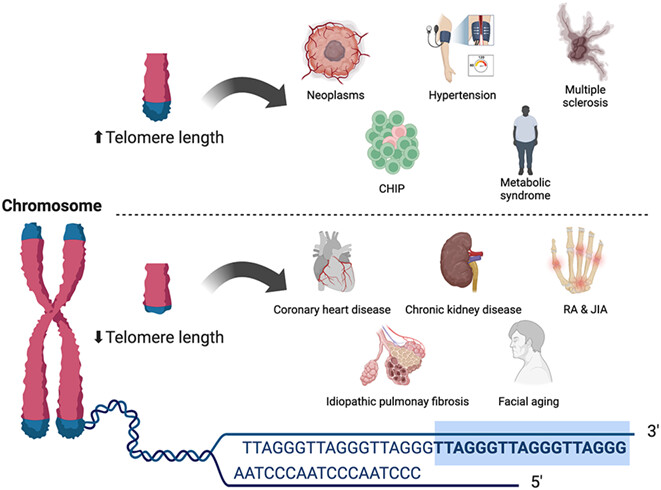
This systematic review and meta-analysis found that genetically determined telomere length was robustly associated with increased risk of neoplasms, hypertension, metabolic syndrome, multiple sclerosis, and clonal hematopoiesis of indeterminate potential and decreased risk of coronary heart disease, chronic kidney disease, rheumatoid arthritis, juvenile idiopathic arthritis, idiopathic pulmonary fibrosis, and facial aging.
RESEARCH ARTICLES
Mid-life leukocyte telomere length and dementia risk: An observational and mendelian randomization study of 435,046 UK Biobank participants
- First Published: 30 May 2023
Accelerated cerebromicrovascular senescence contributes to cognitive decline in a mouse model of paclitaxel (Taxol)-induced chemobrain
- First Published: 26 May 2023
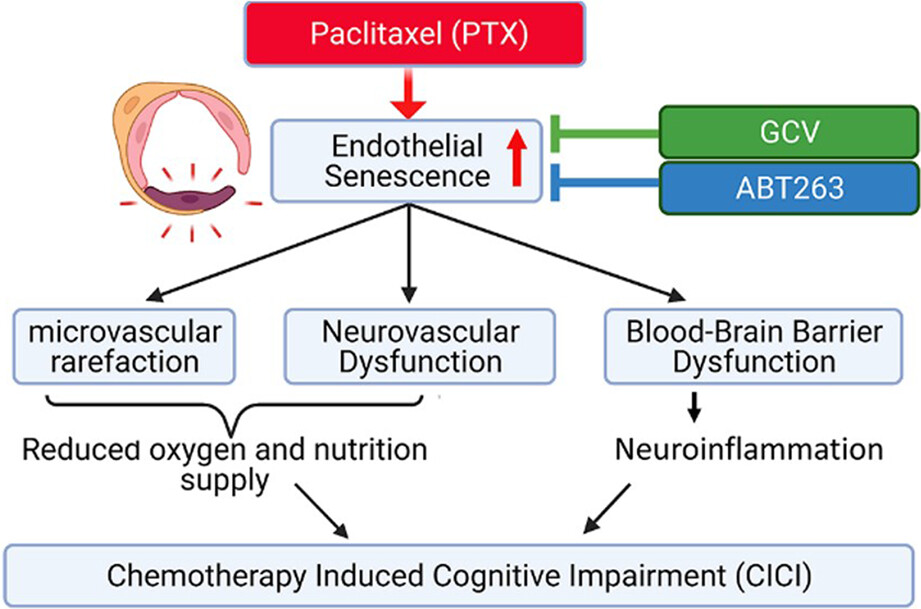
Graphical representation depicting the proposed mechanism of chemotherapy-induced cognitive impairment. PTX treatment induces endothelial senescence, which impairs microvascular function and contributes to cognitive decline. PTX-treated mice exhibit microvascular rarefaction, neuroinflammation, and impaired cognitive performance. Senescent cells are eliminated from PTX-treated animals using genetic or pharmacological means, which results in the restoration of endothelium-mediated neurovascular coupling responses and blood-brain barrier (BBB) integrity, increased capillarization, and improved cognitive performance.
Clearance of senescent cells reverts the cigarette smoke-induced lung senescence and airspace enlargement in p16-3MR mice
- First Published: 20 April 2023
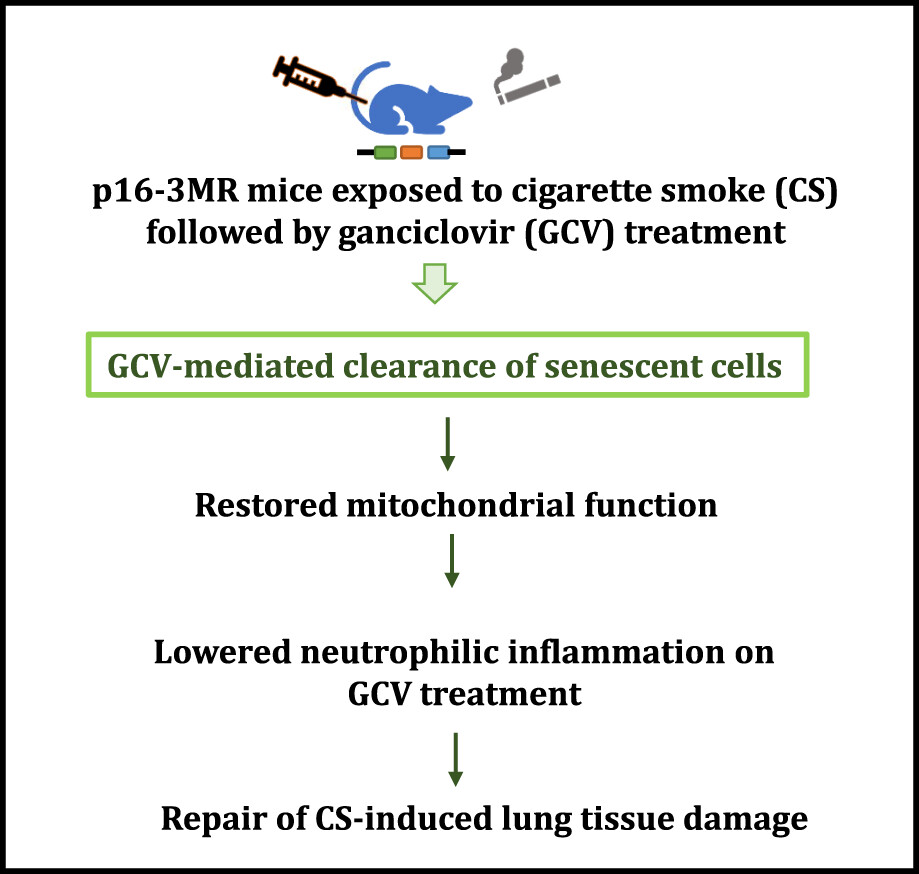
Using a novel mouse model-p16-3MR, we showed the reversal of cigarette smoke (CS)-induced cellular senescence on the clearance of p16+ senesced cells by ganciclovir treatment as well as reversal of CS-mediated airspace enlargement. We provide the evidence on the role of lung cellular senescence on smoke exposure and clearance of senescent cells in the reversal of chronic obstructive pulmonary disease (COPD)/emphysema pathology with a possibility of senolytics as therapeutic interventions in COPD.
Whole-genome methylation analysis of aging human tissues identifies age-related changes in developmental and neurological pathways
- First Published: 12 June 2023
Deletion of quinolinate phosphoribosyltransferase gene accelerates frailty phenotypes and neuromuscular decline with aging in a sex-specific pattern
- First Published: 20 April 2023
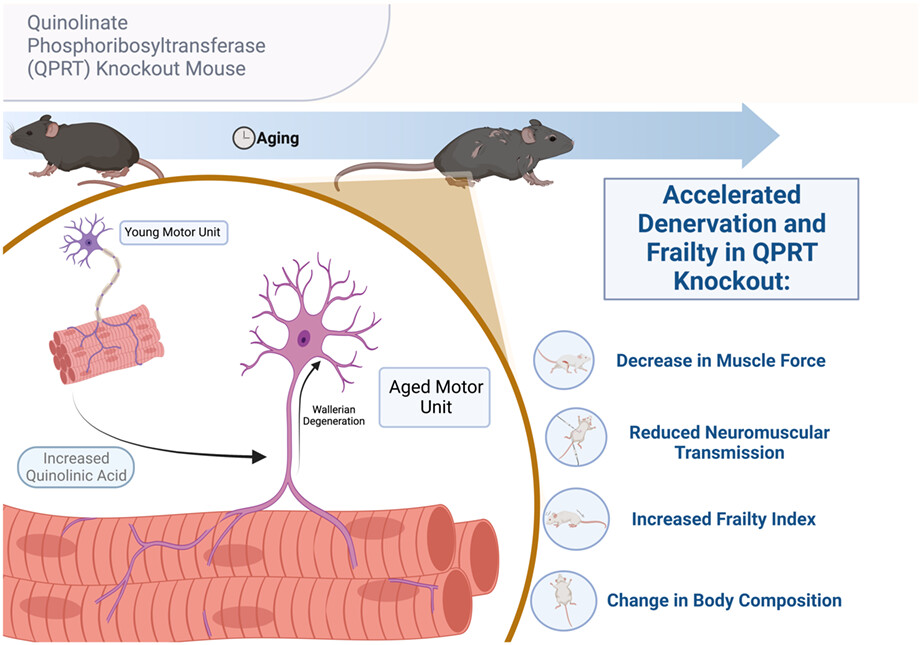
The kynurenine pathway is a major route of dietary tryptophan degradation that produces neurotoxic intermediate metabolites. In the present study, we utilized a mouse model that has elevated neurotoxic quinolinic acid level throughout their lifespan. We found that these mice have accelerated declines in neuromuscular function and premature signs of frailty, in an age- and sex-specific manner compared to control strains. Our findings suggest that the kynurenine pathway is associated with increased frailty and age-associated muscle weakness. Image created with BioRender.com.
Dysregulated cellular redox status during hyperammonemia causes mitochondrial dysfunction and senescence by inhibiting sirtuin-mediated deacetylation
- First Published: 26 April 2023
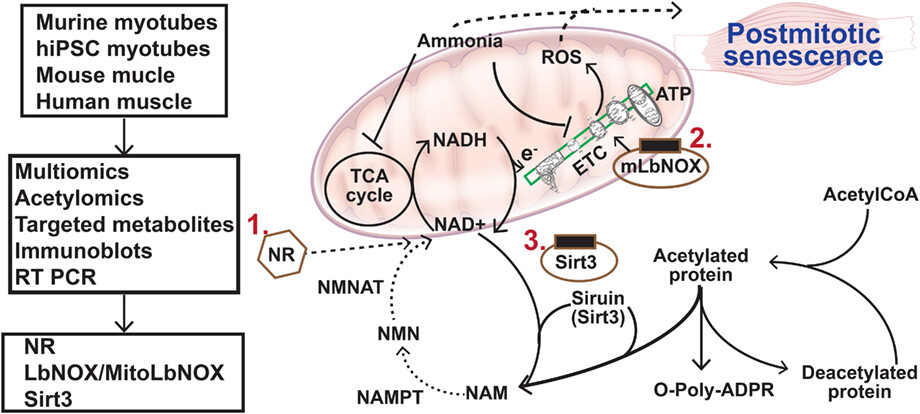
Ammonia is an endogenous cytotoxin that causes post-mitotic senescence but the molecular mechanisms are poorly understood. Complementary multiomics, molecular, and metabolic analyses across a comprehensive array of preclinical models and human skeletal muscle show that mitochondrial oxidative dysfunction results in impaired oxidation of NADH with redox (NAD+/NADH ratio) imbalance. Consequent impairment in mitochondrial sirtuin 3, an NAD+ dependent deacetylase, results in hyperacetylation of cellular, primarily mitochondrial, proteins. Restoration of redox status, rather than targeting sirtuin 3 or providing NAD+ precursor, reversed cellular dysfunction and post-mitotic senescence.
Age-related changes in human skeletal muscle microstructure and architecture assessed by diffusion-tensor magnetic resonance imaging and their association with muscle strength
- First Published: 10 May 2023
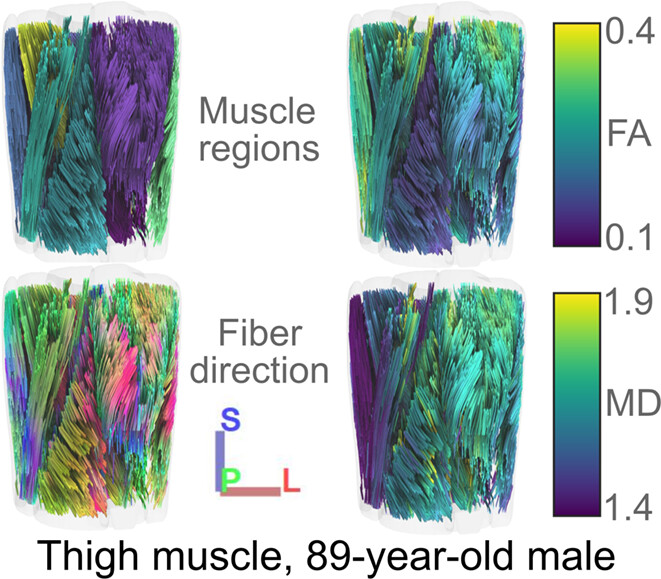
We used diffusion-tensor (DT)-MRI to probe muscle microstructure and architecture in a healthy-aging cohort. We observed age associations in muscle microstructure—fractional anisotropy and mean diffusivity—and architecture—pennation angle, fascicle length, fiber curvature, and physiological cross-sectional area—and associations between architecture and strength. DT-MRI may help elucidate muscle changes in sarcopenia and permit monitoring of interventions for mitigating functional impairment.
Absent in melanoma 2 mediates aging-related cognitive dysfunction by acting on complement-dependent microglial phagocytosis
- First Published: 12 May 2023
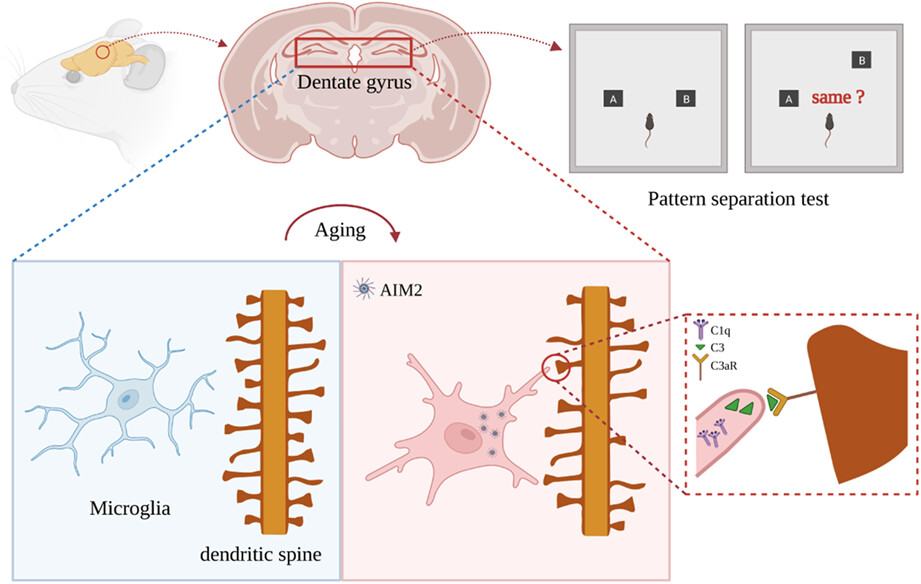
Pattern separation (PS) dysfunction is a cognitive impairment that presents early during the aging process, and this deficit has been attributed to structural and functional alterations in the dentate gyrus (DG) region of the hippocampus. Increased expression of absent in melanoma 2 in the DG region regulates microglial activation in synaptic pruning via the complement pathway, thereby leading to impaired synaptic plasticity and PS behavior in aging mice.
Spatial resolution of cellular senescence dynamics in human colorectal liver metastasis
- First Published: 08 May 2023
Sexual dimorphism in the peripheral metabolic homeostasis and behavior in the TgF344-AD rat model of Alzheimer's disease
- First Published: 24 April 2023
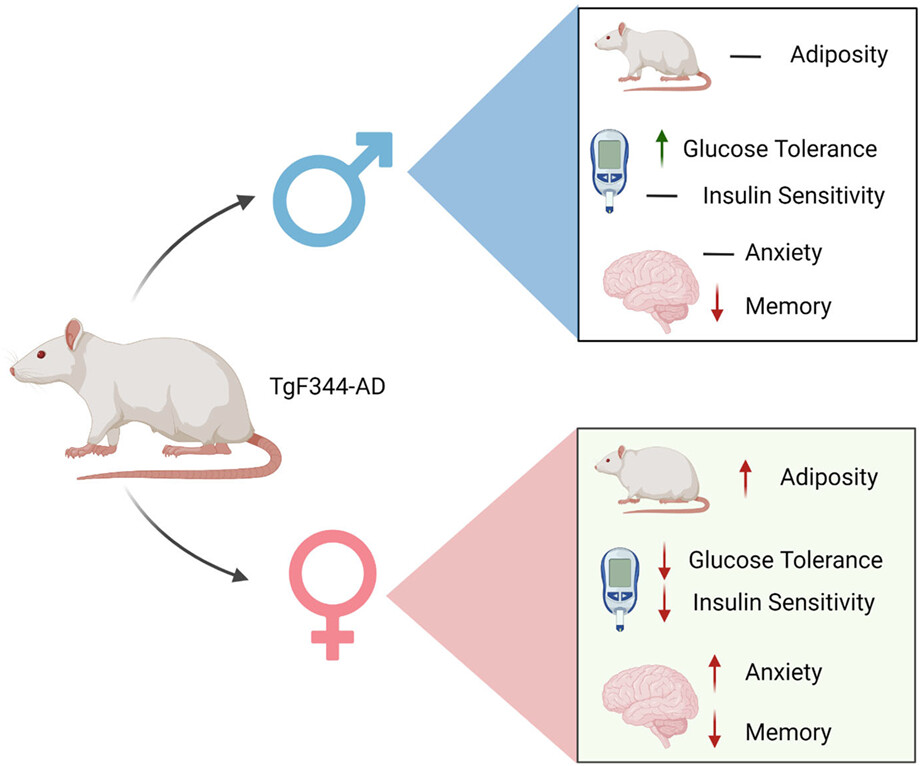
Impaired glucose clearance and reduced insulin sensitivity were observed in female TgF344-AD rats, while males showed no differences. Male rats had learning and memory impairments at both 9 and 12 months of age, while females showed impairments only at 12 months. The findings suggest that metabolic issues occur simultaneously with cognitive decline and anxiety in a sexually dimorphic manner in the TgF344-AD rat model.
Generalized low levels of serum N-glycans associate with better health status
- First Published: 02 May 2023

Caloric restriction induced a general low level of serum N-glycans in C57BL/6 mice across 60 weeks, and genes and pathways involved in glycosylation synthesis were also down-regulated in CR group. A combination of glycome and transcriptome analysis suggested that caloric restriction affects the glycosylation mechanism, which is expected to be a marker of better health status.
Metabololipidomic and proteomic profiling reveals aberrant macrophage activation and interrelated immunomodulatory mediator release during aging
- First Published: 26 April 2023
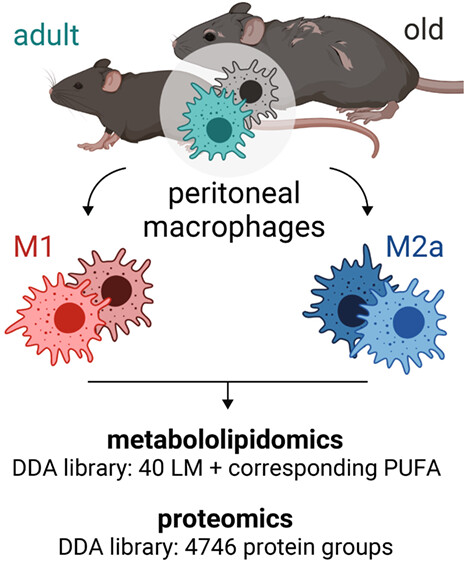
Aging impacts macrophage polarization towards pro-inflammatory (M1) or pro-resolving phenotypes (M2a). We show that the metabololipidome of peritoneal macrophages prior and after ex vivo polarization is limited by age, affecting initiation and resolution of inflammation. Proteome profiling revealed distinct age-associated phenotypes outside of the simplified M1 and M2 dichotomy, strengthening the need to expand classification to address age-related aberrations in their immunological competence.
AP-1 is a regulatory transcription factor of inflammaging in the murine kidney and liver
- First Published: 08 May 2023
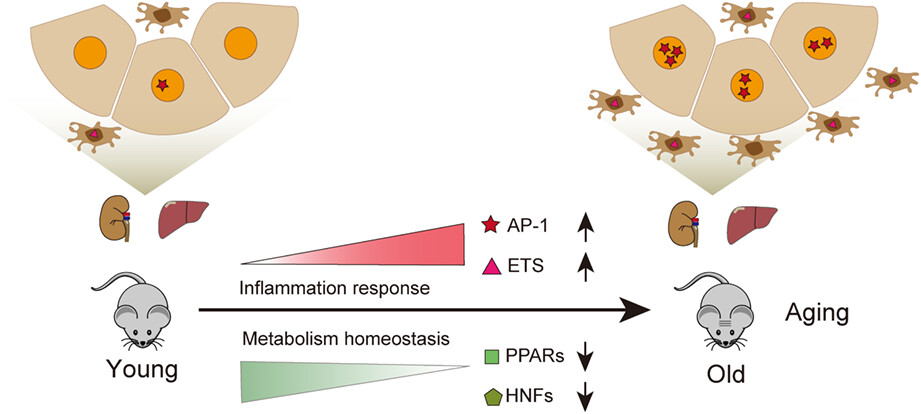
In this study, AP-1 and ETS family transcription factors (TFs) are identified as potential regulators of inflammaging, while HNFs and PPARs act as negative regulators contributing to dysregulated metabolism in the kidney and liver during aging. Additionally, AP-1 and ETS have different roles in regulating inflammation, and genetic manipulation of AP-1 significantly attenuates the inflammatory response in aged kidneys and livers.
GM-CSF and IL-7 fusion cytokine engineered tumor vaccine generates long-term Th-17 memory cells and increases overall survival in aged syngeneic mouse models of glioblastoma
- First Published: 11 May 2023
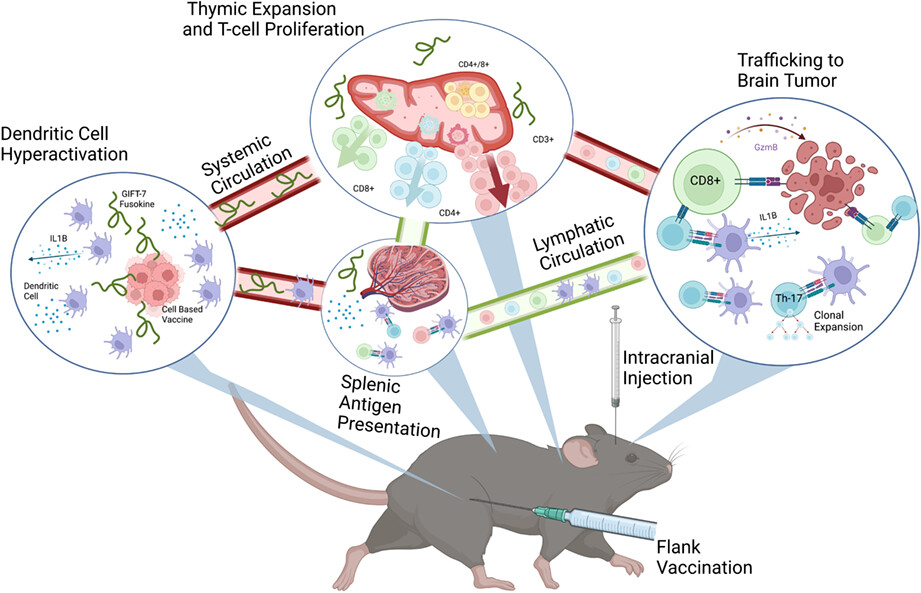
Peripheral vaccination with the GIFT-7 fusokine induces thymic regeneration, dendritic cell hyper-activation, and T-cell trafficking to the brain. Formation of Th-17 based effector immunity results in rejection of contralateral intracranial tumor re-challenge and demonstrates the effectiveness of augmenting the aged immune system with peripheral vaccination.
A DNA methylation based measure outperforms circulating CRP as a marker of chronic inflammation and partly reflects the monocytic response to long-term inflammatory exposure: A Canadian Longitudinal Study on Aging analysis
- First Published: 04 May 2023
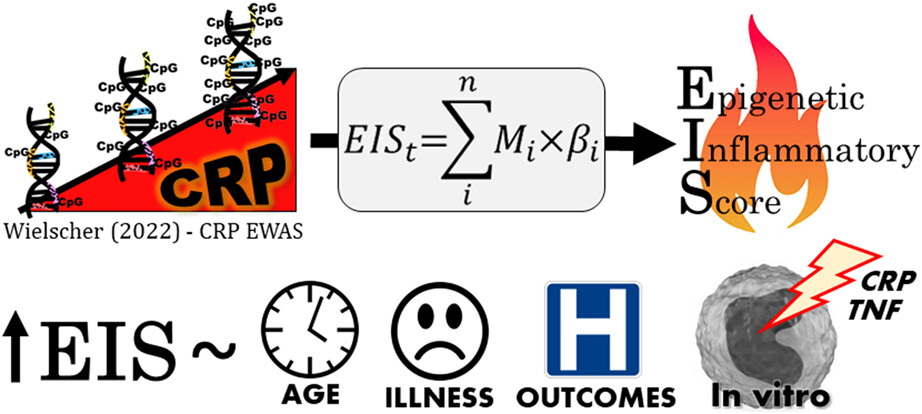
The epigenetic inflammatory score (EIS) is based on the weighted sum of DNA methylation levels at 1511 loci across the human genome. It increases with age, obesity, smoking, and chronic inflammatory conditions, and is associated with the likelihood of healthcare utilization and increased frailty over time. EIS also increases significantly in monocyte-like cells exposed to low-dose CRP or TNF, suggesting a causal relationship between DNA methylation changes and chronic inflammation in adults.
PTEN-induced kinase 1 is associated with renal aging, via the cGAS-STING pathway
- First Published: 15 May 2023

PINK1 deficiency was associated with enhanced renal aging, and the activation of the cGAS-STING pathway was involved in this process. Extensive analyses of transcriptomic-metabolic levels also demonstrated that mitochondrial dysregulation, known to activate STING, might be related to this mechanism through which PINK1 deficiency eventually induces renal aging.




